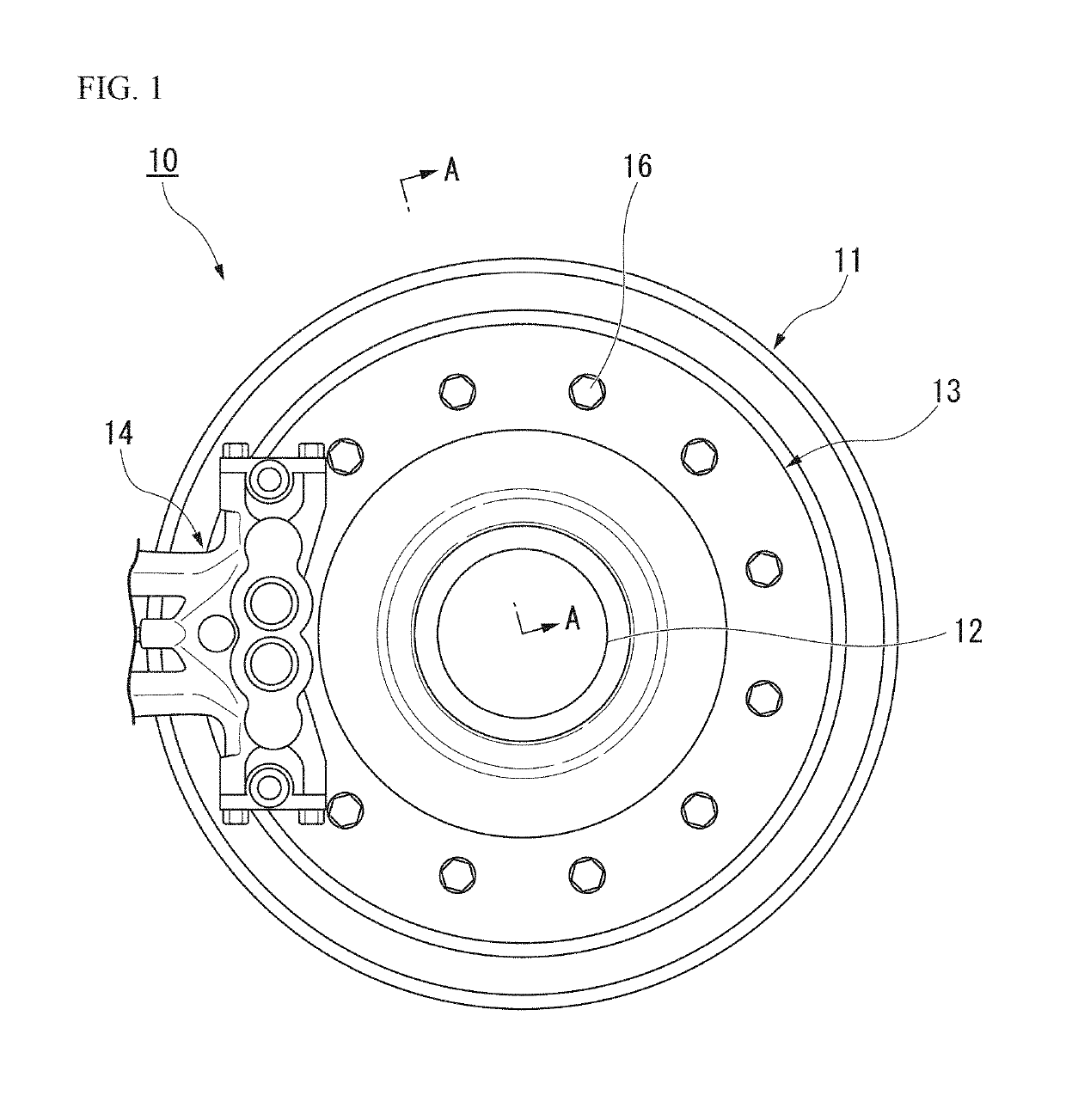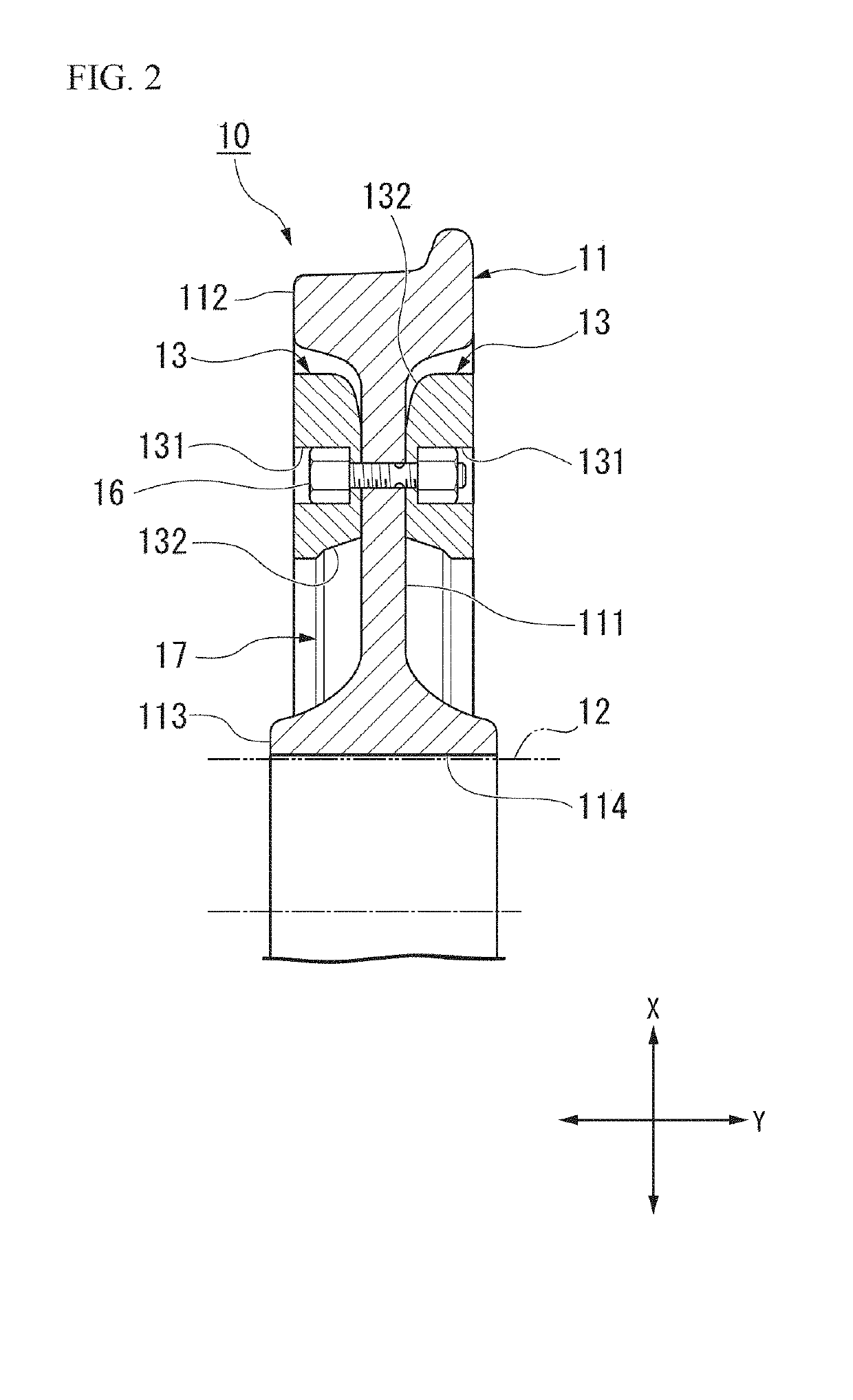Brake disc and manufacturing method thereof
a technology of brake discs and manufacturing methods, which is applied in the field of brake discs, can solve the problems of high temperature, high rotation, oscillatory load, cracking or distorted brake discs, etc., and achieve the effects of suppressing the thermal strain generated during welding, and reducing the thickness of the brake dis
- Summary
- Abstract
- Description
- Claims
- Application Information
AI Technical Summary
Benefits of technology
Problems solved by technology
Method used
Image
Examples
Embodiment Construction
[0042]Hereinafter, an embodiment of the present invention will be described with reference to the accompanying drawings.
[0043]FIG. 1 is a schematic front view showing the appearance of a Shinkansen braking apparatus 10 including a brake disc 13 according to the present embodiment. In addition, FIG. 2 is a schematic cross-sectional view showing an A-A line cross-section in FIG. 1.
[0044]As shown in FIG. 1, the Shinkansen braking apparatus 10 includes a substantially round wheel 11 (rotary body), an axle 12 inserted into the wheel 11, a brake disc 13 attached to the end surface of the wheel 11, and a brake pad 14 disposed close to the brake disc 13.
[0045]As shown in FIGS. 1 and 2, the wheel 11 includes a flat plate part 111 having a constant thickness in an axial direction Y of the wheel 11, a rim part 112 which is provided at the outer edge part of the flat plate part 111 in a radial direction X of the wheel 11 and has a thickness in the axial direction Y thicker than that of the flat...
PUM
| Property | Measurement | Unit |
|---|---|---|
| thickness | aaaaa | aaaaa |
| thickness | aaaaa | aaaaa |
| grain size | aaaaa | aaaaa |
Abstract
Description
Claims
Application Information
 Login to View More
Login to View More - R&D
- Intellectual Property
- Life Sciences
- Materials
- Tech Scout
- Unparalleled Data Quality
- Higher Quality Content
- 60% Fewer Hallucinations
Browse by: Latest US Patents, China's latest patents, Technical Efficacy Thesaurus, Application Domain, Technology Topic, Popular Technical Reports.
© 2025 PatSnap. All rights reserved.Legal|Privacy policy|Modern Slavery Act Transparency Statement|Sitemap|About US| Contact US: help@patsnap.com



